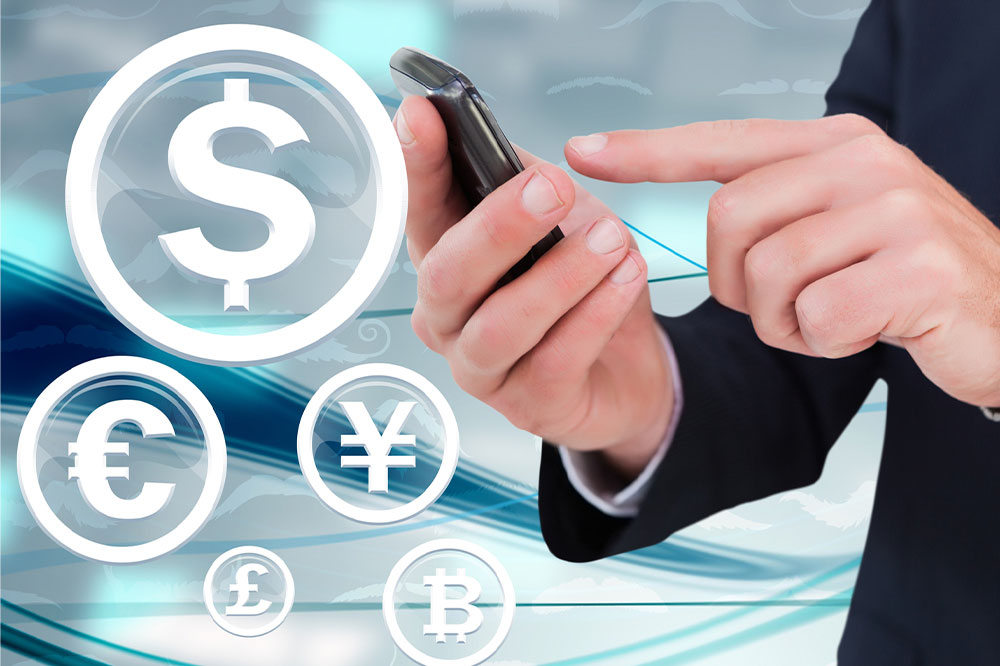
How digital goods and currency altered the world
The rise of intangible products and alternate forms of currency and the spread of digital goods and currency has fundamentally changed how we conduct business. These products are easy to access, distribute, and reach a large audience inexpensively. However, they come with their own set of cons, such as worries about safety, piracy, and regulation. Despite that, expanding digital goods and currency keeps upsetting established business practices, affecting enterprises and people.
Types of digital currencies
Types of digital currencies that function on a peer-to-peer network without a central authority include Bitcoin, Ethereum, and Litecoin. They are built on sophisticated algorithms that allow for security verification and the recording of transactions on a blockchain ledger. A digital currency functions solely online and has no physical presence. They come in various forms, such as cryptocurrencies, virtual currencies, and central bank digital currencies (CBDCs). Here are a few things that you must know about digital currencies:
- Cryptocurrencies’ value is based on market demand and is not guaranteed by any central bank or government.
- Digital currencies often backed by a reserve asset, such as a fiat currency or commodity, include virtual currencies like Facebook’s Libra and Tether. They are frequently employed in online transactions and are less volatile.
- Digital versions of the conventional fiat currencies that central banks issue are known as Central Bank Digital Currencies (CBDCs). They run on a centralized network and are supported by the issuing government’s full faith and credit. CBDCs can help central banks adopt more effective monetary policies and have the ability to increase the speed and security of financial transactions.
Ultimately, the numerous forms of digital currencies that are accessible come with varied advantages and hazards, and the best option relies on the use case being considered. As a result, more varieties of digital currencies are likely to appear as the environment of digital currencies continues to change.
Digital currency vs. traditional currency
Digital currency is different from traditional types of currency in several ways, as mentioned below:
- It doesn’t require a physical form because it is fully digital and runs on a peer-to-peer network.
- Digital currency characteristics include transactions recorded safely and openly on a decentralized ledger like a blockchain. Digital currency is frequently decentralized, which means that a single entity does not govern it and that the market determines its value.
- Because of the use of encryption technology to safeguard transactions and individual data, digital currency is more private and secure than traditional means of payment.
Uses of digital currency
In both business and society, digital currencies have many uses. These are as follows:
- Digital currency’s main use is online transactions, making it possible to make payments quickly and securely without the involvement of outsiders like banks or payment processors.
- Digital currency can also be used as an alternative to conventional modes of payment like cash or credit cards.
- It might be used for remittances, foreign transfers, and micropayments, but it appeals to private users and companies.
- Additionally, digital money can promote financial inclusion by granting unbanked and underbanked communities access to financial services.
What are virtual digital assets?
Virtual digital assets are intangible things with a specific value that may be purchased, offered for sale, and traded on online marketplaces. They consist of in-game items, virtual properties, and digital collectibles. With the development of blockchain technology and non-fungible tokens, virtual digital assets have become increasingly popular (NFTs).
Digital assets, also known as NFTs, are non-replicable. They are kept on a blockchain ledger, making it possible for the asset to be owned and transferred safely and transparently. In addition, NFTs have been used to represent a variety of digital assets, including pieces of music, artwork, and video game merchandise.
With some NFTs fetching millions of dollars, the sale of NFTs has given rise to a new market for digital virtual assets. Virtual digital assets have several benefits, including easier access to niche markets and lower entry hurdles for creators.
They also present new chances for monetization and income streams. They also present particular difficulties, like the possibility of piracy and the absence of legal structures for ownership and transfer.
Types of digital goods
Intangible products, known as digital goods, are delivered and accessed online. Digital goods are in many forms, such as e-books, music, movies, software, and video games. E-books, for instance, have completely changed the publishing sector by allowing authors to publish independently and inexpensively reach a global audience. Libraries, music, and movie streaming services have completely changed how we consume entertainment since they make it simple to access huge amounts of content.
Digital distribution has also assisted the creation of software and video games, allowing creators to reach a larger market and update their works more quickly. Generally, digital commodities are more accessible, convenient, and cost-effective than physical goods, and their use is projected to increase in the future.
The development of digital goods and currency has significantly altered how we conduct business. Digital currencies have opened up new avenues for payment and financial inclusion, while digital assets have enabled new creativity, innovation, and monetization. However, the intangible character of these assets also poses certain difficulties, such as security risks and regulatory problems.
As a result, it is necessary to comprehend these difficulties and take action to reduce their hazards. Because of this, the ongoing development of digital goods and currency will change how we do business.




